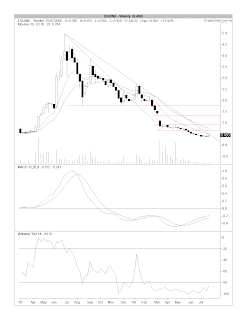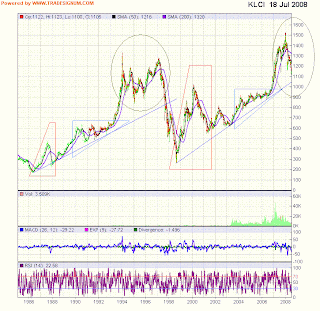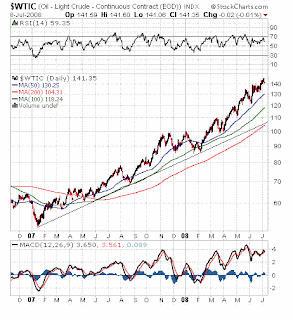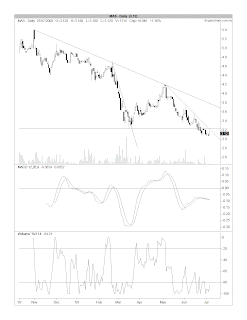What are the unresolved issues raised by the external auditors, Messrs Howarth? I think one of the issues raised could be the Other Receivables, Deposits & Prepayments, which jumped from RM25.0 million as at 31/3/2007 to RM151.6 million as at 31/3/2008 (see Table 1 below). A breakdown of this item is given in Note 15 (see Table 2 below). Essentially, the company advanced RM93.0 million to its Suppliers & RM52.2 million to its Sub-contractors as at 31/3/2008. Why did it do it? According to the Note, the Advances to the Suppliers was to secure the supply of fabric, embroidery, accessories and yarn at a pre-determined prices (because raw materials' prices were escalating), while the Advances to Sub-contractors was in the ordinary course of business. In the past, there were also Advances to Sub-contractors, but the amount was not so big.
It is interesting to note that the company's Trade Receivables & Inventories had dropped during that periods. Its Trade Receivables dropped from RM214.9 million to RM197.4 million, while its Inventories declined from RM56.4 million to RM33.6 million. Could the decline in these 2 items due to a drop in its Turnover from RM441 million for FYE31/3/2007 to RM406 million for FYE31/3/2008, resulting in a drop in working capital requirement? Or, could the drop in Trade Receivables & Inventories be related to the rise in Other Receivables, Deposits & Prepayments- possibly due to wrong classification?

Table 1: Axis' Assets details as at 31/3/2008

Table 2: Breakout of Other Receivables, Deposits & Prepayments
In the past 1 year, Axis was in the news in not a positive light on two occasions. It was reported that MALAYSIAN Rating Corporation Bhd ('MARC') had downgraded Axis' RM100 million debt notes to "negative", following its breach of the covenanted debt to equity ratio of 1.5 times. The rating was subsequently revised back to "developing" as Axis was at an advanced stage of the refinancing exercise, having obtained approval for the facilities from the relevant bank (go here). Since then, there was no further news on the debt notes' refinancing. It is possible that the debt notes were refinanced because the gearing ratio had jumped up substantially in the 4Q2008 ended 31/3/2008 (see Table 3 below). What is interesting is that while Axis was reported to have violated the covenanted debt to equity ratio of 1.5 times in October 2007, my calculation of gearing ratios (whether as Total Borrowings to Shareholders' Funds or as Total Liabilities to Shareholders' Funds) as per Table 3 did not reveal a ratio higher than 1.2 times for either periods ended 31/12/2007 or 30/9/2007. How did the earlier violation come about?

Table 3: Axis' Gearing Ratios as at 31/3/2008, 31/12/2007 & 30/9/2007
In March this year, Axis was in the news again, in a story regarding “forced selling” of stocks that are pledged to Global Trader in return for a leveraged line of credit (go here). It was reported that "(s)hareholders of the affected companies are said to have pledged their shares to Global Trader’s office in Bangkok. Following the liquidity crunch faced by its parent company in the UK, the administrators scrutinized the accounts of its clients, especially in its Bangkok branch. It sold the pledged shares and other assets of accounts that had a margin shortfall. This in turn triggered a massive forced selling of the stocks that were pledged. Companies affected are said to have included …Axis Incorporation Bhd. "
From Chart 1 below, we can see how the share price was hammered down when the Global Trader story came out as well as when its unaudited results for FYE31/3/2008 was released. The current round of selling had pushed the share price to a new all-time low (see Chart 2).

Chart 1: Axis' daily chart as at July 30th (source: Tradesignum.com)

Chart 2: Axis' monthly chart as at July 29th (source: Quickcharts)
We will have to wait & see how this unpleasant mess will be played out. As accounting scandals become more frequent, we are reminded again that the important aspect of investment is risk management. If one has a large exposure to a stock like Axis, the drawdown or loss could be so substantial that it would take a few years to recoup the capital.
























